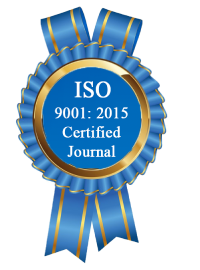| All | Since 2020 | |
| Citation | 172 | 110 |
| h-index | 7 | 5 |
| i10-index | 1 | 0 |
WJERT Citation 
Login
News & Updation
Abstract
EHA-NDIAGU CLAY DEPOSITS: PHYSIC-CHEMICAL CHARACTERIZATION FOR INDUSTRIAL REFRACTORY APPLICATIONS.
I. C. C. Iloabachie*, I. D. Adiele, C. N. Onyia and B. O. Okpe
ABSTRACT
This research work evaluated the characterization of Eha-Ndiagu clay in Enugu State, South-East Nigeria for its industrial potentials. The chemical analysis was performed at National Steel Raw Materials Exploration Agency (NSRMEA), Kaduna, using a Perkin Elmer Atomic Absorption Spectrophotometer (AAS) while the physical properties were investigated following American Society for Testing and Material (ASTM) stipulated standards. The physical properties determined were apparent porosity, bulk density, linear shrinkage, apparent density, modulus of rupture, plasticity index, Atterberg Limit and water absorption capacity. The result of the chemical composition analysis showed that the, the clay contains mainly Silica Oxide (SiO2) 56.71%, Aluminum Oxide (Al2O3) 21.05% and Iron oxide (Fe2O3) 5.31% with other oxides such as MgO (1.50%), K2O (1.92%) and TiO2 (1.03%) in appreciable amounts. The physical analysis showed a variation in the linear shrinkage (3.35 to 7.88%), total shrinkage (5.06 to 9.46%), apparent porosity (41.02 to 32.57%), bulk density (1.52 to 1.76 g/cm3), water absorption (15.22 to 8.9%) and modulus of rupture (12.86 to 24.78kgF/cm2) with increase in firing temperature from 900oC to 1200oC. The Atterberg Limit result showed that the clay has high plasticity. The overall analysis of the results showed that Eha-Ndiagu clay deposit is siliceous in nature and of the alumino-silicate refractories that may be classified as kaolinitic fireclay. This result therefore, showed that Eha-Ndiagu clay has good industrial potentials and can be useful in the manufacture of ceramics, high melting clays, refractory, bricks, tiles and in the paper and paint industries but with the incorporation of additives that will help to obtain the desired properties.
[Full Text Article] [Download Certificate]
